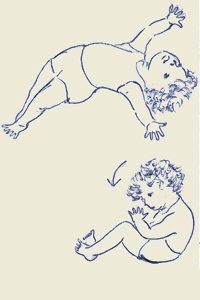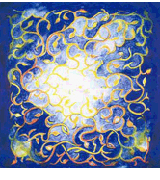Practice for Movement
Tonic Labyrinthine Reflex
The movement:
When the head bends backwards, the arms and legs stretch and the body bends backwards. When the head is bent forward, the muscle tone in the front slackens so that the body collapses. This reflex helps the baby at birth to fully extend and get out of the fetus' bent position. Muscle tone and balance are practiced, also in relation to sensory stimuli and the balance organ.
Function: differentiation in space in front of, behind, and in the body. Someone with an unrestrained Tonic Labyrinth Reflex has difficulty orienting in space and time because a fixed point is missing. This makes it difficult to distinguish what is above, below, left, right, front and back.
Symptoms of an uninhibited Tonic Labyrinthine Reflex:
- Poor balance
- Obstacle to the development of reflexes that keep your head straight and ensure a stable posture
- Difficulty with: the direction of movement, keeping a stable center of gravity while moving in the room, immediately tightening and relaxing the right muscles during movements
- Walking on toes and forefoot
- Stumbling, climbing stairs is problematic
- Lack of sense of depth, wobbly when walking on wooden platforms above water
- Eyes get tired easily, difficulty focusing quickly from far away to close and vice versa
- motion sickness
- Fear of heights when the Tonic Labyrinthine Reflex is generated
- Neck and back pain
- Poor control of your neck muscles
- Panic and anxiety, for example when diving or swimming under water
- cannot stand stuff around throat
- Terror, fear of death (reflex surfaces due to a life-threatening situation where the connection between head and body is in danger of being broken)
- No sense of time
- As a result of all this a woody gait, poor posture and robotic movements

exercises:
pdf: exercises
